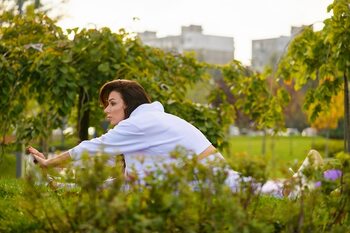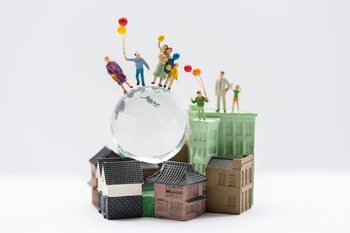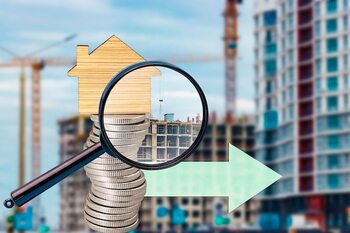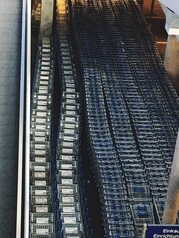The relationship between urban aesthetics and the value of your home

Urban aesthetics not only beautify our cities but also play a crucial role in the value of your home. In a world where location and appreciation are determinants when buying or selling properties, understanding how the visual and functional elements of the environment influence the perception of the property is essential. Exploring this relationship will allow you to make more informed decisions about your property and its future appreciation. Discover how the appeal of your neighborhood can translate into economic benefits!
The importance of first impressions: How does aesthetics influence the valuation of a home?
The first impression that a home leaves on a visitor or potential buyer is crucial and is often determined by the aesthetics of the environment. The way a property is presented, both inside and out, can significantly influence its valuation. Elements such as landscaping, the quality of materials used in construction, and harmony with the urban surroundings contribute to creating a positive or negative image. A well-maintained and attractive neighborhood not only generates immediate interest but can also elevate the property's price by placing it within a visually pleasing and desirable context.
Moreover, aesthetics goes beyond mere appearance; it also affects the emotions and perceptions of those who visit or evaluate a home. A bright, clean, and well-designed space can evoke feelings of comfort and well-being, making buyers more inclined to invest in it. On the other hand, a neglected or disorganized atmosphere can raise doubts about the property's maintenance and its real value. Thus, paying attention to aesthetic details not only enhances the quality of life in the home but also becomes a valuable strategy to maximize its value in the real estate market.
2. Key urban design elements that impact real estate value
Urban design elements, such as the quality of public space, accessibility, and landscape planning, have a significant impact on real estate value. A well-designed neighborhood that offers parks, plazas, and recreational areas not only enhances the quality of life for its residents but also translates into greater demand for local properties. The presence of vegetation, pedestrian pathways, and recreational zones can attract families and professionals seeking a pleasant living environment, which drives up real estate market prices.
Additionally, connectivity and transportation are key factors in urban design that directly affect property value. Areas with easy access to efficient public transport or main roads tend to be more desirable, as they allow residents to quickly commute to their workplaces or entertainment. This not only increases convenience for inhabitants but also makes properties more attractive to potential buyers and investors, thereby raising their value in the market. In summary, well-planned urban design can be a great ally in increasing the value of your home.
3. Green spaces: The role of landscaping in property appreciation
Landscaping plays a fundamental role in the perception of a property, as green spaces not only provide aesthetic beauty but also offer tangible benefits for the well-being of its inhabitants. Well-designed gardens, nearby parks, and recreational areas are elements that enhance the quality of the urban environment. These features not only invite enjoyment of the outdoors and connection with nature but also foster a sense of community among residents. When a neighborhood is adorned with well-maintained green spaces, it becomes a more attractive place for potential buyers, which can result in increased demand and an increase in property values.
Furthermore, the integration of green spaces in urban design can directly influence the commercial value of properties. Studies have shown that homes located near parks or gardens have a higher price compared to those situated in environments without vegetation. This is due to several factors: green spaces improve air quality, offer opportunities for recreational activities, and provide quiet areas to relax. All of this contributes to creating a positive environment that not only increases the satisfaction of current residents but also makes it attractive for future buyers interested in investing in their well-being and quality of life. Therefore, investing in landscaping is a smart strategy to increase the long-term value of any property.
4. The influence of public art on the appeal of a residential area
Public art has become an essential component in shaping the identity of a neighborhood, acting as a magnet for both residents and visitors. Sculptures, murals, and other forms of artistic expression not only beautify the environment but also tell stories about the community, fostering a sense of belonging and local pride. This aesthetic appeal can elevate interest in the area, which in turn translates into higher real estate demand. The more vibrant and culturally rich the environment, the more likely potential buyers are to view the property as a valuable investment.
Additionally, public art offers a unique opportunity for communities to come together and actively participate in their development. Events such as art festivals or outdoor exhibitions can attract people from various areas, generating a steady flow of visitors that contributes to the economic vitality of the area. This activity not only enhances local commerce but also elevates the neighborhood's profile in terms of quality of life. When a residential area is adorned with meaningful and accessible artworks, its overall appeal increases, which can positively reflect on long-term home values.
5. Infrastructure and nearby services: Beyond the visual
Infrastructure and nearby services are fundamental aspects that transcend mere urban aesthetics. Although the design of streets, parks, and buildings can be visually appealing, the functionality of these elements is what truly impacts residents' quality of life. Proximity to schools, hospitals, shopping centers, and public transportation not only facilitates daily activities but also increases the perceived value of a property. A neighborhood well-equipped with adequate infrastructure offers comfort and accessibility, factors that translate into higher demand for the property.
Moreover, an environment with good public services, such as efficient garbage collection, adequate lighting, and regular maintenance of common areas, helps create a sense of community and safety. These elements generate trust among potential buyers and tenants, who prioritize living in areas where they can enjoy both the visual aspect and practical well-being. In this sense, investing in properties located in areas with solid infrastructure and nearby services not only enhances the daily experience of its residents but also ensures a more stable and profitable long-term investment.
6. How architectural trends affect real estate market prices
Architectural trends have a significant impact on real estate market prices, as the aesthetics of a neighborhood can attract different demographic groups and increase demand for properties. For example, an area that embraces modern and sustainable designs tends to attract young buyers interested in a contemporary and eco-friendly lifestyle. This type of architecture not only beautifies the environment but can also elevate the perceived value of the property, leading to an appreciation of nearby properties. When a community stands out for its architectural appeal, it is likely to experience an increase in interest from investors and buyers.
Additionally, trends in urbanism often influence how residential areas are perceived. The development of well-designed public spaces, such as parks and plazas, along with the incorporation of cultural and artistic elements in local architecture, can transform an ordinary neighborhood into a highly desirable one. This transformation not only improves the quality of life for current residents but also attracts new buyers willing to pay more to live in a vibrant and appealing area. Consequently, staying informed about these trends can provide homeowners with valuable opportunities to maximize the value of their homes through strategic decisions regarding improvements or even considerations about buying or selling properties.
7. Urban safety and aesthetics: A combination that increases the value of your home
Urban safety and aesthetics are intrinsically linked, creating an attractive environment that not only invites residents but also protects their investments. A well-designed neighborhood, with well-maintained public spaces, adequate lighting, and green areas, generates a sense of security among its inhabitants. People tend to feel more comfortable in places where urban design is intended to promote natural surveillance and community use of spaces, which translates into greater residential satisfaction. This emotional well-being directly impacts property values, as potential buyers seek safe environments that are not only visually appealing but also functional.
Furthermore, the integration of aesthetic elements such as artistic murals, attractive street furniture, and well-executed landscaping not only enhances the image of the neighborhood but can also act as a catalyst for local economic development. Businesses thrive in areas where there is a steady flow of visitors attracted by a visually stimulating and safe environment. This synergy between safety and aesthetics translates into greater demand for local properties, thereby boosting their long-term appreciation. By investing in aesthetic improvements and maintaining high safety standards in your community, you contribute to both collective well-being and the increase in your home’s value.
8. Community projects: Initiatives that enhance neighborhood value
Community projects are initiatives that can transform the aesthetics of a neighborhood and, in turn, raise the property values in the area. By involving residents in the design and execution of public spaces, such as parks, squares, and artistic murals, a sense of belonging and pride among neighbors is fostered. These spaces not only enhance the appearance of the area but also promote social interaction and community well-being. An attractive environment draws more people interested in settling there, which can significantly increase property values.
Additionally, these projects often have the support of local organizations or municipal governments that seek to revitalize specific areas. Investing in aesthetic and functional improvements can make a significant difference in the overall perception of the neighborhood. For example, a well-designed new park not only provides a recreation area for families but can also be a decisive factor for those considering buying a home in that area. Thus, by actively participating in community initiatives or supporting their development, residents not only contribute to beautifying their immediate surroundings but also benefit economically as they see their properties increase in value over time.
9. The connection between sustainable development and real estate valuation
The connection between sustainable development and real estate valuation is fundamental today, as more and more buyers and tenants value properties that not only meet their aesthetic needs but also align with sustainability principles. Features such as energy efficiency, the use of eco-friendly materials, and the integration of green spaces in architectural projects not only enhance the quality of life for residents but also increase the property's appeal. In this sense, a home located in an environment that promotes sustainable practices can experience a significant increase in its value over time.
Furthermore, sustainable development fosters more cohesive and healthier communities. Initiatives such as the creation of parks, pedestrian pathways, and efficient public transportation systems not only beautify the neighborhood but also elevate its prestige. Buyers are increasingly aware of the environmental impact of their decisions and tend to prefer areas that prioritize social and environmental well-being. As a result, properties in these sustainable zones can enjoy a higher appreciation compared to those located in areas less committed to responsible development. This comprehensive approach to real estate valuation highlights the importance of considering both aesthetic and sustainable aspects when assessing the economic future of a home.
10. Strategies to maximize the aesthetic appeal of your home to potential buyers
Maximizing the aesthetic appeal of your home to potential buyers is essential for enhancing its market value. A well-maintained facade, with harmonious colors and balanced landscaping, can make a big difference in the first impression a potential buyer gets. Consider making small repairs or renovations, such as painting the front door or adding pots with vibrant plants, to create a welcoming entrance. Additionally, outdoor lighting also plays an important role; soft lights can highlight architectural features and create a warm atmosphere during evening visits.
Don't underestimate the impact of the interior of your home on its overall appeal. Depersonalizing spaces by removing very personal items and carefully organizing each room will allow buyers to imagine themselves living there. Using neutral colors on walls and decorations will also help make your rooms look larger and brighter. Finally, make sure that each area is clean and tidy; there is nothing more discouraging for a buyer than entering a cluttered space. With these simple yet effective strategies, you can present your home attractively and maximize its value to potential buyers.



